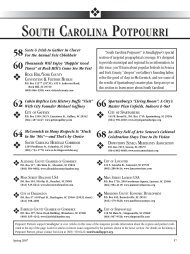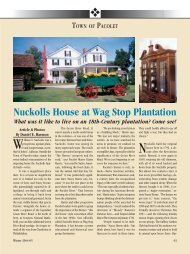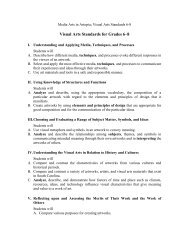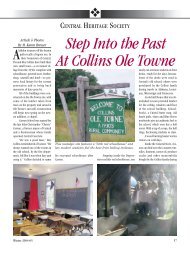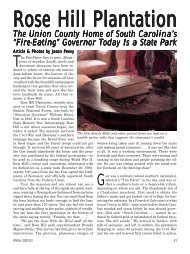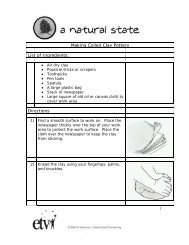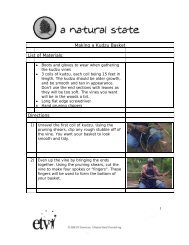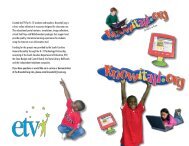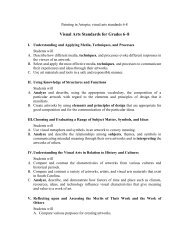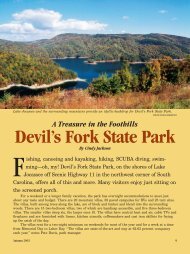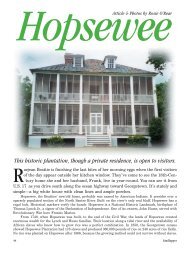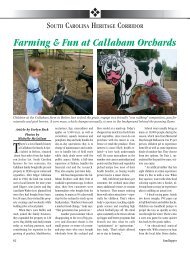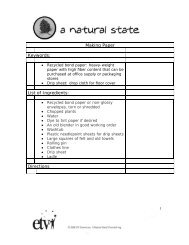The Case Of The Physical Fitness Challenge - Knowitall.org
The Case Of The Physical Fitness Challenge - Knowitall.org
The Case Of The Physical Fitness Challenge - Knowitall.org
Create successful ePaper yourself
Turn your PDF publications into a flip-book with our unique Google optimized e-Paper software.
Video Component<br />
Careers<br />
astronaut<br />
Astronaut Strength<br />
and Conditioning<br />
Specialist<br />
athlete<br />
athletic trainer<br />
coach<br />
exercise specialist<br />
physical education<br />
teacher<br />
4. “What’s Up?” Questions—<strong>The</strong>se questions at the<br />
end of the segment help students predict what<br />
actions the tree house detectives should take next in<br />
the investigation process and how the information<br />
learned will affect the case. You can<br />
print them by selecting Educators<br />
on the web site in the Activities/<br />
Worksheet section under Worksheets<br />
for the current episode.<br />
View Segment 1 of the<br />
Video<br />
For optimal educational benefit,<br />
view <strong>The</strong> <strong>Case</strong> of the <strong>Physical</strong> <strong>Fitness</strong><br />
<strong>Challenge</strong> in 15-minute segments and<br />
not in its entirety. If you are watching<br />
a taped copy of the program, you<br />
may want to stop the video when the<br />
Focus Question icon appears to allow<br />
students time to answer the question.<br />
After Viewing<br />
1. Have students reflect on the “What’s Up?” Questions<br />
asked at the end of the segment.<br />
2. Discuss the Focus Questions.<br />
3. Students should work in groups or as a class to discuss<br />
and list what they know about physical fitness and<br />
nutrition. Have the students conduct research about<br />
how astronauts stay in shape while in space, about the<br />
types of muscles in the body and how they are used,<br />
and about the President’s <strong>Physical</strong> <strong>Fitness</strong> <strong>Challenge</strong>.<br />
Brainstorm for ideas about how they can stay healthy<br />
and be physically fit. As a class, reach a consensus<br />
on what additional information is needed. Have the<br />
students conduct independent research or provide<br />
them with the information needed.<br />
4. Have the students complete Action Plans, which<br />
can be printed from the Educators area or the<br />
tree house Problem Board area in the Problem-<br />
Solving Tools section of the web site for the current<br />
online investigation. Students should then conduct<br />
independent or group research by using books and<br />
internet sites noted in the research rack section of<br />
the Problem Board in the Tree House. Educators<br />
can also search for resources by topic, episode, and<br />
media type under the Educators main menu option<br />
resources.<br />
2005–2006 NASA SCI Files Series<br />
http://scifiles.larc.nasa.gov<br />
5. Choose activities from the Educator Guide and web<br />
site to reinforce concepts discussed in the segment.<br />
<strong>The</strong> variety of activities is designed to enrich and<br />
enhance your curriculum. Activities may also be used<br />
to help students “solve” the problem along with the<br />
tree house detectives.<br />
6. For related activities from previous programs,<br />
download the appropriate Educator Guide. On the<br />
NASA SCI Files home page, select the fence post that<br />
says “Guides.” Click on the 2002–2003 Season tab<br />
and then click on <strong>The</strong> <strong>Case</strong> of the Biological Biosphere©.<br />
In the green box, click on Download the Educator<br />
Guide.<br />
a. In the Educator Guide you will find<br />
a. Segment 2 – Give Me Some Skin, page 31<br />
b. Segment 2 – Just Breathe, page 32<br />
c. Segment 4 – Getting to the Heart of the Matter,<br />
page 56<br />
To locate additional activities and worksheets on the<br />
web, click on Activities/Worksheets in the tool bar<br />
located at the top of the window. Scroll to the 2002–<br />
2003 Season and click on, <strong>The</strong> <strong>Case</strong> of the Biological<br />
Biosphere©. In the Activities/Worksheet section, you<br />
will find<br />
a. Body System Booklet<br />
b. In the Beat of a Heart<br />
7. Have the students work individually, in pairs, or in<br />
small groups on the problem-based learning (PBL)<br />
activity on the NASA SCI Files web site. To locate<br />
the PBL activity, click on Tree House and then the<br />
Problem Board. Choose the 2005–2006 Season and<br />
click on <strong>The</strong> <strong>Case</strong> of the Sedentary Students.<br />
• To begin the PBL activity, read the scenario (Here’s the<br />
Situation) to the students.<br />
• Read and discuss the various roles involved in the<br />
investigation.<br />
• Print the criteria for the investigation and distribute.<br />
• Have students begin their investigation by using<br />
the research rack and the Problem-Solving Tools<br />
located on the bottom menu bar for the PBL activity.<br />
<strong>The</strong> research rack is also located in the Tree House.<br />
8. Having students reflect in their journals what they<br />
have learned from this segment and from their own<br />
experimentation and research is one way to assess<br />
student progress. In the beginning, students may<br />
have difficulty reflecting. To help them, ask specific<br />
questions that are related to the concepts.<br />
EG-2005-10-09-LARC <strong>The</strong> <strong>Case</strong> of the <strong>Physical</strong> <strong>Fitness</strong> <strong>Challenge</strong><br />
1



